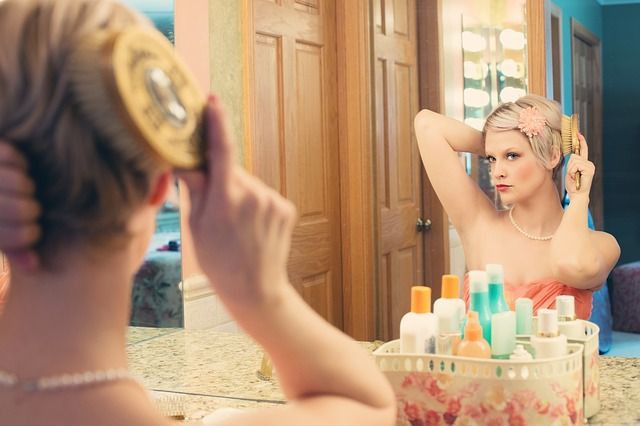Women With High Estradiol Levels Can Spot Fertility Of Ovulating Rivals Via Facial Cues

You’ve probably walked up to one of your girlfriends and embarrassingly whispered, “Do you have a pad or a tampon?” This is the tell-tale sign that you’re not ovulating or pregnant, but on your period. Now, according to a recent study published in the journal Biology Letters, women are able to spot when other women are ovulating by simply looking at their face.
Unlike humans, many animals send obvious signals to indicate their fertility. For example, female cats yowl and spray urine during estrus, their time of ovulation and sexual receptivity. Meanwhile, other animals, like female chimps, have an eye-catching approach – their external sex organs swell as large as a cantaloupe during ovulation.
Ovulation cues in humans are subtle, but perceivable. Previous research has found women are more likely to dance and walk differently, but see, sound, smell, and look more attractive during the fertile days of their cycle, from a man’s perspective. These cues benefit men directly because the likelihood of reproducing is highest with a woman in her fertile cycle phase.
Study co-author Janek Lobmaier, at the University of Bern in Switzerland, and her colleagues, wondered if women, like men, have the ability to spot the fertility of other ovulating women, and how this can possibly be beneficial, in two experiments. In an online study, 160 women were shown pairs of photographs of women — one taken in the most fertile and one in the least fertile phase of their menstrual cycle — and asked to indicate which face they found more attractive (without knowing which is ovulatory). Women are fertile for a short duration of their menstrual cycle — a few days before and the day of ovulation.
In the second experiment, 60 women were given the same test in the lab. The participants were asked to choose the more attractive face, and which women would be more likely to steal their own date. Blood tests were taken to record the women's hormone levels. The study did not test the potential influence of naturally fluctuating estradiol levels.
The findings revealed that unlike men, women did not find either the “fertile” or “less fertile” faces more attractive than one another. This was surprising to the researchers who hypothesized women to find the faces of their fertile peers more attractive. However, an interesting trend was found among the last group. Women who were not ovulating, but had high estradiol levels - female sex hormone linked to high general fertility - were more likely to pick the ovulatory woman as more likely to steal her date away.
“These results imply a role of estradiol when evaluating other women who are competing for reproduction,'” wrote the researchers in the study.
Meanwhile, Lobmaier believes this phenomenon may provide little to no benefit. “For women, there is perhaps no direct advantage to detect fertility in other women's faces, but there might be indirect benefits, for example by making sure her own partner does not commit adultery," she said.
The belief that women find other ovulatory women as rivals has been noted in scientific literature. A study released earlier this month, observed how women may perceive other women's fertility as a threat to their romantic relationships. Across four studies, heterosexual female participants — either engaged or married — were shown photographs of a series of women, and then asked how willing they would be, on a seven-point scale, for the women to befriend their partner. The women were not told which women were ovulating, and they didn't consciously consider the idea.
The participants were significantly more likely to want to create distance between the photographed woman and their partner when the other woman was ovulating. The participants were especially protective when they viewed their partner as desirable, and the women in the photograph was physically attractive. This process is known as mate guarding.
Besides creating physical distance, the authors found women would use employ tactics to keep their partners close. “Specifically, women with desirable partners reported that they would show increased sexual interest in their partners after viewing a high-fertility target, regardless of how attractive that target was,” the researchers wrote.
Although the ability to spot other ovulatory women may be effective, especially when it comes to mate guarding, in real life, this strategy could be exhausting. Rather than worry which women are more likely to be man eaters, it’s best to choose well and trust your friends.
Sources: Lobmaier JS, Bobst C, Probst F. Can women detect cues to ovulation in other women's faces? Biology Letters. 2016.
Oberzaucher E, Katina S, Schmehl SK et al. The myth of hidden ovulation: Shape and texture changes in the face during the menstrual cycle. Journal of Evolutionary Psychology. 2016.



























